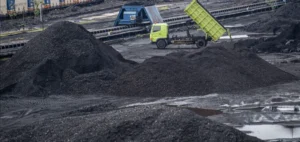India has just reached a strategic threshold in its domestic coal production, surpassing one billion tonnes during the current fiscal year, marking a significant milestone in its energy ambitions. This achievement, reached a few days before the official end of the fiscal year, directly results from an active governmental policy aimed at maximizing the exploitation of domestic resources. Several measures, including the opening of the mining sector to private companies through commercial auctions, have played a decisive role in achieving this result. Simultaneously, the country made substantial savings by reducing its coal imports by more than 8% over the same period.
Reforms and Production Growth
These figures reflect the direct impact of amendments made to the Mines and Minerals (Development and Regulation) Amendment Act (MMDR), which streamlined administrative procedures for private players. Additionally, the Indian government actively encouraged private investments by launching transparent and regular tenders for economically profitable coal blocks. This approach enabled India not only to invigorate its coal sector but also significantly reduce the pressure on foreign currency reserves by decreasing dependence on the international market. Consequently, the country saved approximately 5.43 billion USD in foreign exchange over nine months, demonstrating the tangible benefits directly associated with this policy.
Coal India Limited (CIL), the world’s largest coal producer and an Indian state-owned enterprise, significantly contributed to this historic figure by accelerating operations across multiple strategic mining sites. However, the increasing involvement of private enterprises has also substantially boosted total production, thus distributing risks and reinforcing the sector’s stability. Therefore, this historic performance could sustainably reshape India’s energy economic landscape through the diversification of market participants.
Impacts on the Indian Economy
Economically, this record increase in national production has direct and immediate repercussions. Reduced imports decrease the country’s vulnerability to fluctuations in international coal prices and geopolitical tensions affecting global energy markets. Moreover, increased domestic production enables better predictability of energy costs for local industries, enhancing their competitiveness in global markets. These savings can thus be directly reinvested into improving energy or industrial infrastructure, creating a virtuous cycle beneficial to the national economy as a whole.
India’s electricity sector remains heavily dependent on coal, accounting for nearly 74% of electricity produced in the country. This reality underscores the crucial importance of stable, large-scale coal production, particularly to meet the growing demand from industries and households. Securing domestic energy supplies is thus a major issue for India’s economic policy, aimed at ensuring stable and continuous growth.
Future Outlook
With this milestone achieved, market observers now question the next objectives the country might target regarding domestic energy production. Continuation of this strategy will require increased investments in modernizing mining and logistical infrastructure, as well as in extraction technologies to maximize yields. The market will closely follow upcoming government decisions, which will determine the country’s ability to maintain this production pace in the coming years while addressing steadily increasing domestic demand.






















